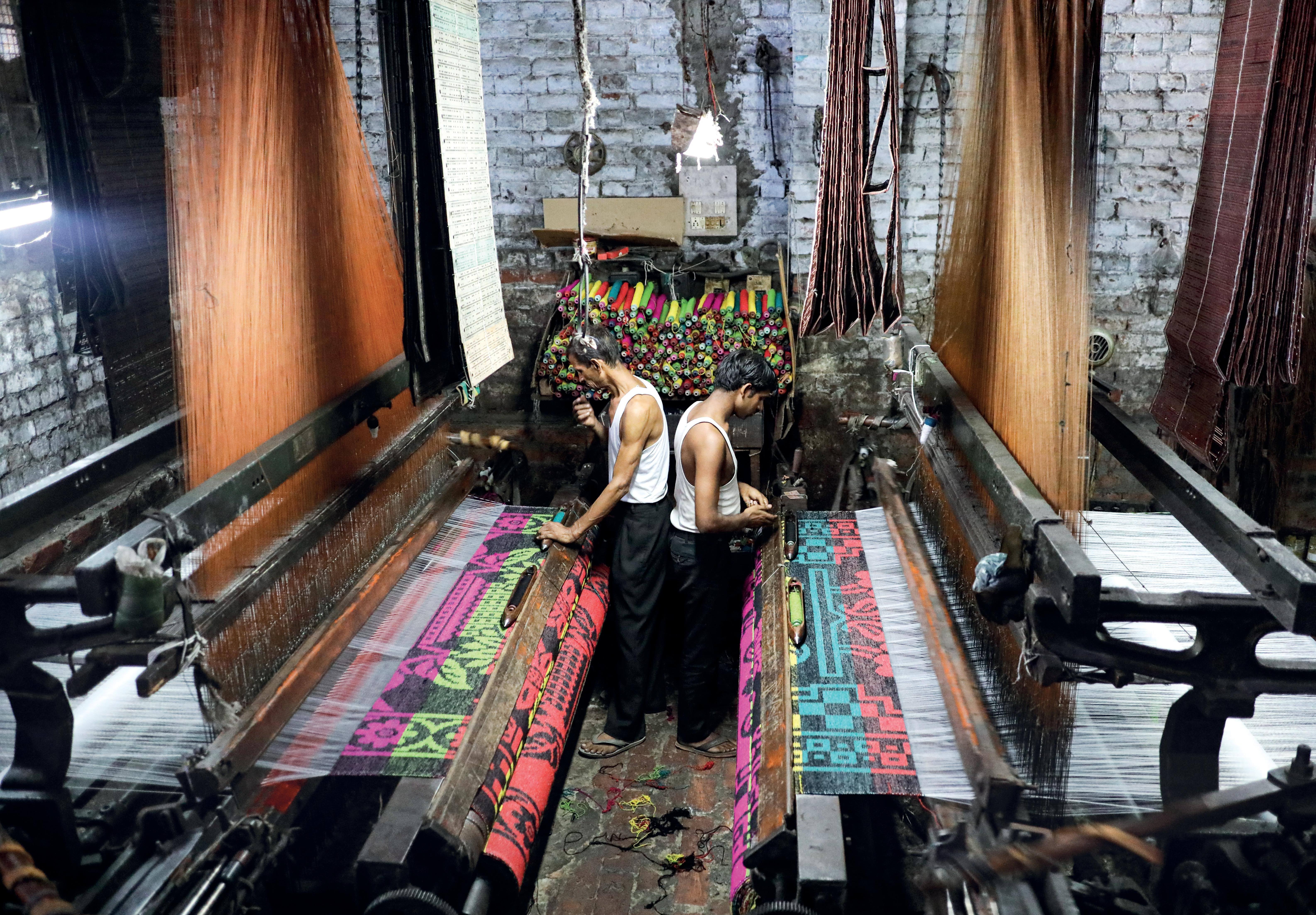
BELIEVE IT or not, most of our clothes today have plastic in them. From the warm, shiny fleece jackets we wear to brave the winter chill to body-hugging workout clothing to stretchy and comfortable lowers, all the apparel is either completely made out of plastic fibres such as polyester, nylon and acrylic, or from the blending of natural fibres such as cotton and wool with the synthetic material.
About 60 per cent of material made into clothing is plastic, which includes polyester, acrylic and nylon textiles, says the UN Environment Programme (UNEP). The global production of polyester, the most commonly used plastic fibre, has increased by nearly 900 per cent between 1980 and 2014, as per November 2022 report released by US-based non-profit Fibershed. There is a reason the textile industry is so fond of polyester. Despite being tough and durable, it creates new possibilities of fashion. Clothes made out of polyester hold their shape well, are lighter, wrinkle-free and resistant to shrinking and colour fading. But perhaps the most important reason for its popularity is that garments made from synthetic fibres are substantially cheaper than natural fabrics. In April 2019, the cost of polyester yarn in India was ₹105 a kg, while cotton yarn was more than double at ₹213, as per the latest data released by the Union Ministry of Textiles. While on the face of it, clothes made of plastics appear harmless, their infiltration into the textile industry is a cause for concern. These synthetic fabrics have significant environmental impact during production, use and disposal.
This story is from the January 01, 2023 edition of Down To Earth.
Start your 7-day Magzter GOLD free trial to access thousands of curated premium stories, and 8,500+ magazines and newspapers.
Already a subscriber ? Sign In
This story is from the January 01, 2023 edition of Down To Earth.
Start your 7-day Magzter GOLD free trial to access thousands of curated premium stories, and 8,500+ magazines and newspapers.
Already a subscriber? Sign In

IF IT AIN'T BROKE, DON'T FIX IT
West Bengal's Bhanga Mela (scrap fair) has pushed the limits of recycling. Organised every January at Mathurapur village in 24 South Parganas district, shops at the fair sell discarded electronic items, antiques and even non-functional goods that are in repairable condition.

A wild chase
BASED ON A 2015 PROBE THAT BUST A MAJOR IVORY SMUGGLING RACKET IN INDIA, POACHER PROVIDES A RARE GLIMPSE INTO THE WORK OF FOREST OFFICIALS

Suspect claims in Teva's suit against Cipla
The US Federal Trade Commission has warned the Israeli drug firm its patents are wrongful as it sues Cipla aggressively

WATER SCARREDCITY
Bengaluru's water crisis was long in the making. The city has grown at the cost of its lakes and ponds that are key to its water security. Over 93 per cent of the city is built-up, which makes groundwater recharge difficult. Inadequate sewage systems pollute the limited water available. Over the decades, the city has become dependent on the Cauvery, 100 km away, for 70 per cent of its water needs. This makes water unaffordable. It's time Bengaluru broadened its water resource base beyond the Cauvery and focused on recharging groundwater and reusing treated wastewater.

On guard
Communities in Chhattisgarh and Uttar Pradesh reduce human-elephant conflicts using technology and proactive on-ground monitoring

Overlooked crisis
While there is much talk about climate migration, the world is without a legal framework to protect people displaced by weather disasters

Taking charge for water
A young sarpanch in Maharashtra helps his village residents avail drinking water at home

International Women's Day Special SHE
In India, women self-help groups have been a source of empowerment, fostering economic independence, social stature and community resilience.

MODERATELY YOURS
The crunchy, slightly sweet tubers of shankhalu can be a healthy addition to one's diet

TROUBLED TEAK
Farmers need to be sensitised about right planting materials and cultivation techniques to benefit from high-value teak plantations